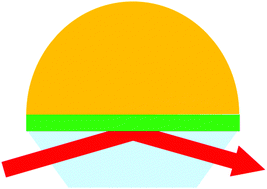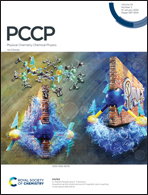Spectroscopic analysis focusing on ionic liquid/metal electrode and organic semiconductor interfaces in an electrochemical environment
Abstract
The solid–liquid interface forms an electric double layer that enables the function of electronic devices and, thus, represents an important area of electrochemical research. Because ionic liquids (ILs) are becoming prominent candidates for new high-performing electrolytes, their interface with solid substrates (e.g., metal electrodes or organic semiconductors) attracts substantial attention. An example of improvement achieved using ILs as electrolytes is a decrease in the operating voltage of transistors from >10 V in traditional SiO2-gated transistors to <1 V in IL-gated electronic double-layer organic field-effect devices. This perspective discusses the investigation of poorly accessible IL/substrate interfaces using both attenuated total reflectance ultraviolet (ATR-UV) spectroscopy and a newly developed electrochemical setup combined with ATR-UV (EC-ATR-UV), which allows analysis of the interfacial area under the application of varying electric potential. The recent EC-ATR-UV applications in interfacial analytical chemistry are overviewed and compared to other spectroscopic methods described in the recent literature. Lastly, the supplementation of experimental data with theoretical calculations (e.g., quantum chemical calculations and molecular dynamics simulations) is also addressed.

- This article is part of the themed collections: 2021 PCCP HOT Articles and PCCP Perspectives


 Please wait while we load your content...
Please wait while we load your content...